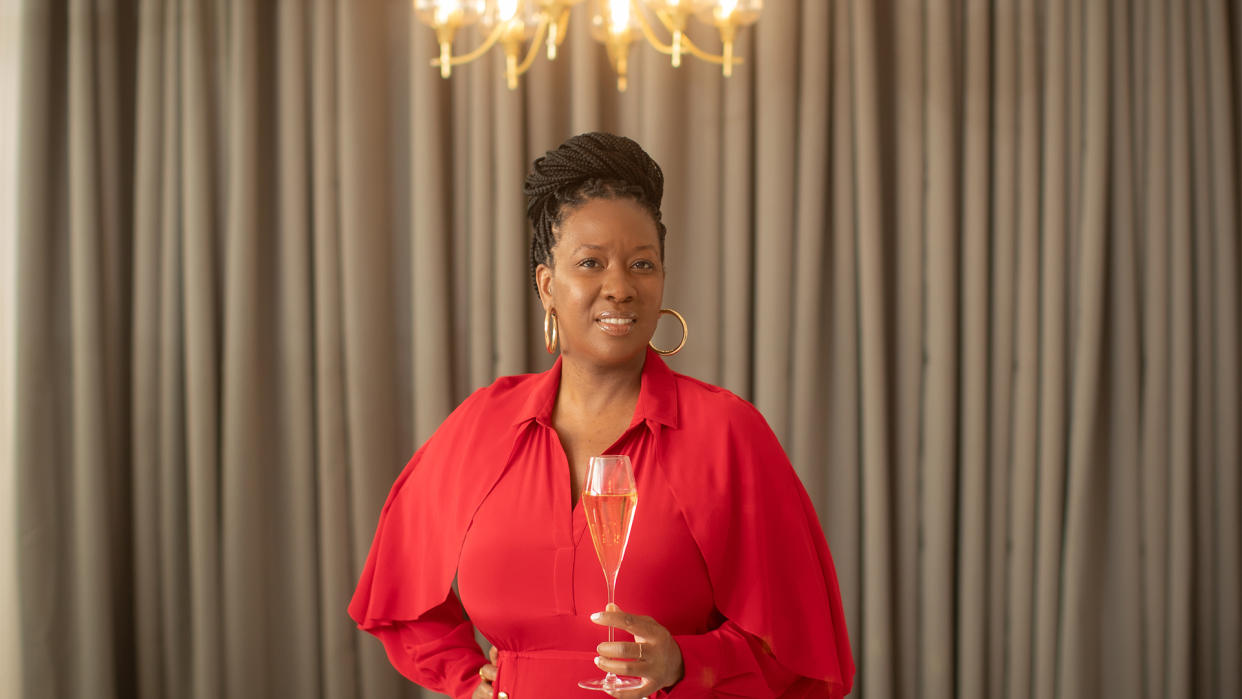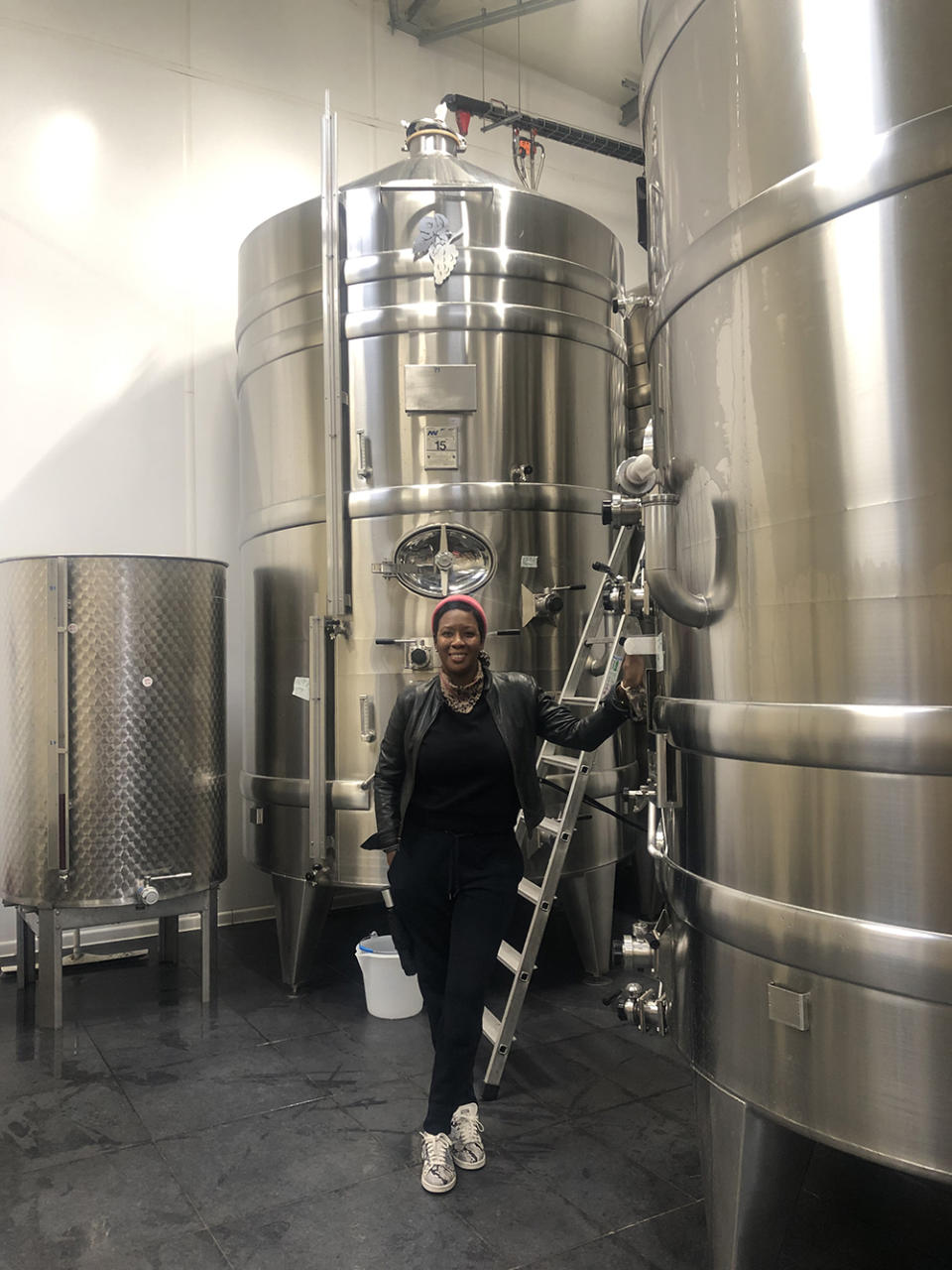How Marvina Robinson Left a Career on Wall Street to Create Brooklyn’s First Champagne

Marvina S. Robinson holds a master’s degree in statistics from Columbia University and spent 20 years on Wall Street evaluating the fiscal health of countless companies. But she’s emphatic that she did not so much as glance at the success (or failure) rate of start-ups in the wine industry before boldly leaving her career in finance—which included stints at Morgan Stanley, Citco, and J. P. Morgan, among other firms—to launch B. Stuyvesant Champagne. The first Black American woman to own a Champagne brand, Robinson is a prime example of someone who managed to turn her side hustle into a full-on business.
She first developed an affinity for Champagne while drinking it with childhood friends during college breaks and later adopted it as her order of choice as a young woman working in finance who did not want to get drunk on cocktails at business dinners. Professing a penchant for grower Champagne, vintage bottles, and grand and premier crus, Robinson gravitated toward Marc Hébrart, Canard-Duchêne, Louis Roederer, and Gosset. “I’m in love with Billecart-Salmon,” she says.
More from Robb Report
Robinson used her professional know-how to begin researching the Champagne industry as a hobby around 2014. Soon she was flying to France on weekends. “I used to leave my job on Friday afternoon, catch that 6:30 p.m. flight from JFK, get to France on Saturday morning, check into my hotel, shower, change, run to get the train to get me out to Champagne, and do what I had to do,” she tells Robb Report. “I would leave a suit at the gym, come back on Monday morning, shower, and go to work dead to the world.”

Far from a Champagne-world insider at the time, Robinson relied on her city-kid swagger. “I was trespassing on people’s property, just going wherever I fit in. I didn’t know what I was doing or what I was building; I just knew that I needed to be in the Champagne region in order to understand Champagne,” Robinson says as she attends to last-minute details for a small party for friends and family at her Brooklyn Navy Yard tasting salon, which doubles as B. Stuyvesant’s offices. “You just have to immerse yourself in the culture, and that’s how you figure it out.”
She’d previously founded a cycling studio and a coffee bar (both now defunct), and her original plan for this entrepreneurial venture was to import a few small brands and open a Champagne bar in Brooklyn, but the pandemic was clearly not the time for a new lounge. Pivoting on her own pivot, Robinson took the knowledge she’d accumulated and instead created her own bubbly in 2020.
Although the name B. Stuyvesant carries the patrician air of one of New York City’s founding families, the brand is a tribute to the neighborhood where Robinson grew up and still resides, Bedford-Stuyvesant in Brooklyn. Known to New Yorkers as Bed-Stuy, the area has had its ups and downs over the past several decades and is now in the throes of late-stage gentrification. Robinson initially planned to call her brand simply Stuyvesant Champagne, but securing the label proved to be a challenge. “The Champagne committee rejected the name Stuyvesant several times because it’s a cigarette company in France,” she says. In order to win approval, Robinson eventually differentiated it with the B, for Bedford.
Today, Robinson lives five minutes by foot from the house where she was raised. “The Stuyvesant name means a lot to me because I grew up on Stuyvesant Avenue,” she explains. “My school bus picked me up on Decatur and Stuyvesant. When I went to high school, it was at Boys & Girls High School at Fulton and Stuyvesant. My first full-time job, at Morgan Stanley, I remember walking up Stuyvesant Avenue in heels. Never again—but that’s how it all started. That’s why I wanted to make sure I named the brand Stuyvesant, because it’s a reflection of who I am and where I’m from.”
I was trespassing on people’s property, just going wherever I fit in.
The distance between her middle-class Brooklyn upbringing and the rarefied world of Champagne not withstanding, Robinson hasn’t ventured far from home. Her office and tasting room are about 20 minutes by car—or a one-hour stroll (sans the heels)—from the heart of Bed-Stuy.
Sourced and produced in Épernay (she does not disclose her winery partner’s name but says that everything is estate grown and made on-site), B. Stuyvesant manufactures about 20,000 bottles per year—the same as many small family wineries in Europe and the United States—of brut, réserve, rosé, and demi-sec Champagne. The réserve is made in sizes ranging from splits (187 milliliters, or one-quarter bottles, which Robinson refers to as minis) to half bottles, full sizes, magnums, jeroboams (equivalent to six bottles), Salmanazars (12 bottles), and Nebuchadnezzars (20 bottles). Prices per full-size bottle range from $59 to $99.
On the day of our visit, a limited-edition four-pack of minis in a carrier box featuring graffiti-style renderings of Brooklyn landmarks, including the Navy Yard’s distinctive cranes, has just arrived at the tasting room. Robinson expects the edition of 500 packs, each retailing for $84.99 in-house or online, to sell out quickly. Her strategy is to limit quantities of multi-packs or of special bottlings such as Premier Cru or Rosé Prestige, of which she produces 800 bottles each per year. “What I try is to do things short and sweet so they don’t linger all year,” she says. “What I don’t want is a whole bunch of inventory just sitting in my warehouse. I want to move it. Remember, because I own the brand 100 percent, I have to pay for all of this, so I’m growing slowly to get ready to scale.”

Robinson is at her offices by 7 a.m. every day; she likes to have time to think before her staff and customers start filtering in. But she also relishes interaction: She’ll often pour flights and explain the different cuvées to customers who come in for tastings. B. Stuyvesant has begun to work with a distributor for restaurant and wine-shop placement in and around New York, but the brand’s strongest sales are direct to consumer, including a corporate gifting program. Robinson is aware of the limitations in the world of luxury and of the need to strike a balance. “When I first launched, I wanted to be everywhere,” she notes. “Now I know I don’t need to be everywhere.”
Last year Robinson released a line of handblown sparkling-wine glassware called Anivram Dining Collection (the name is Marvina spelled backward). Her personal preference: a tulip-style glass, with wider body and tapered mouth, rather than a standard flute, which she refers to as “Spanx for bubbles” because the narrow design stops Champagne from fully opening up. In addition, she has a wine-vending machine in production that will dispense half bottles of her rosé, demi-sec, and réserve (once proper ID is scanned, of course). Dream placements range from airline lounges to hotel lobbies, but she plans to station one in her own tasting room and another in her upcoming Champagne bar, which will feature B. Stuyvesant as well as a variety of under-the-radar grower Champagnes when it opens, she projects, near the Navy Yard within a year.
After walking away from what she describes as “my good career” in 2019 at the age of 42 to enter “the land of the unknown,” Robinson seems satisfied with her decision. “My last firm was amazing, but I was falling more in love with my part-time job, or hobby, going back and forth to France on the weekends, and I knew that this is what I wanted to do full-time,” she says. And while a younger, less seasoned Robinson once thought that all she craved was “a big title,” her current self is proud of “turning nothing into something and watching it evolve.”
Best of Robb Report
Why a Heritage Turkey Is the Best Thanksgiving Bird—and How to Get One
The 10 Best Wines to Pair With Steak, From Cabernet to Malbec
Sign up for Robb Report's Newsletter. For the latest news, follow us on Facebook, Twitter, and Instagram.


